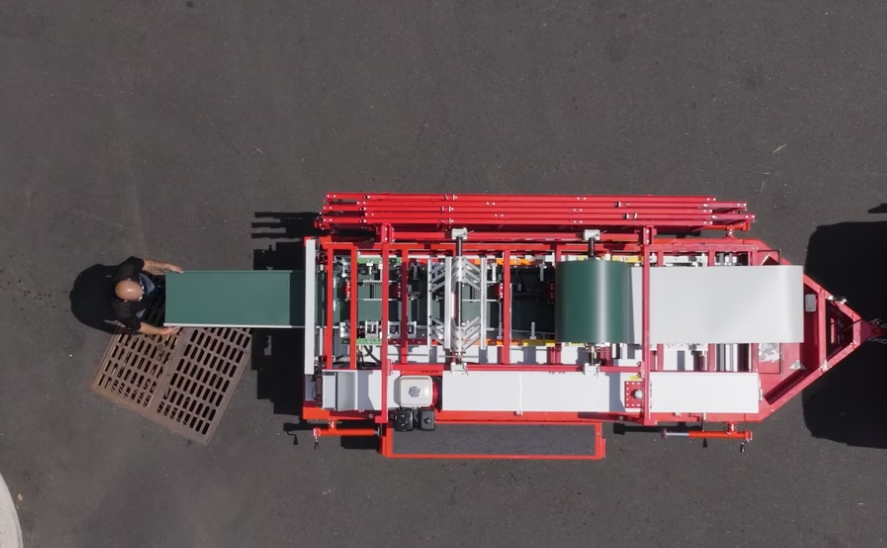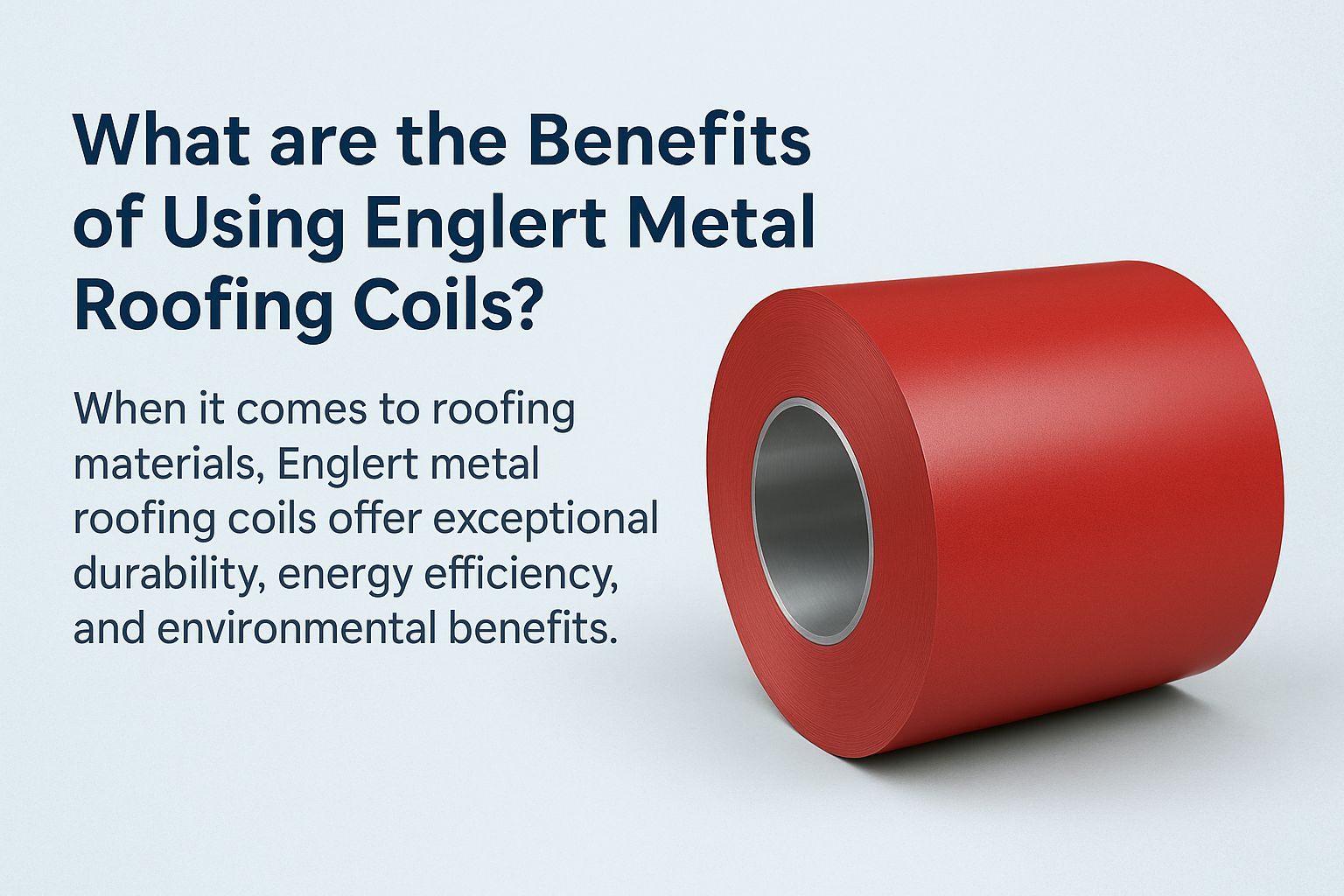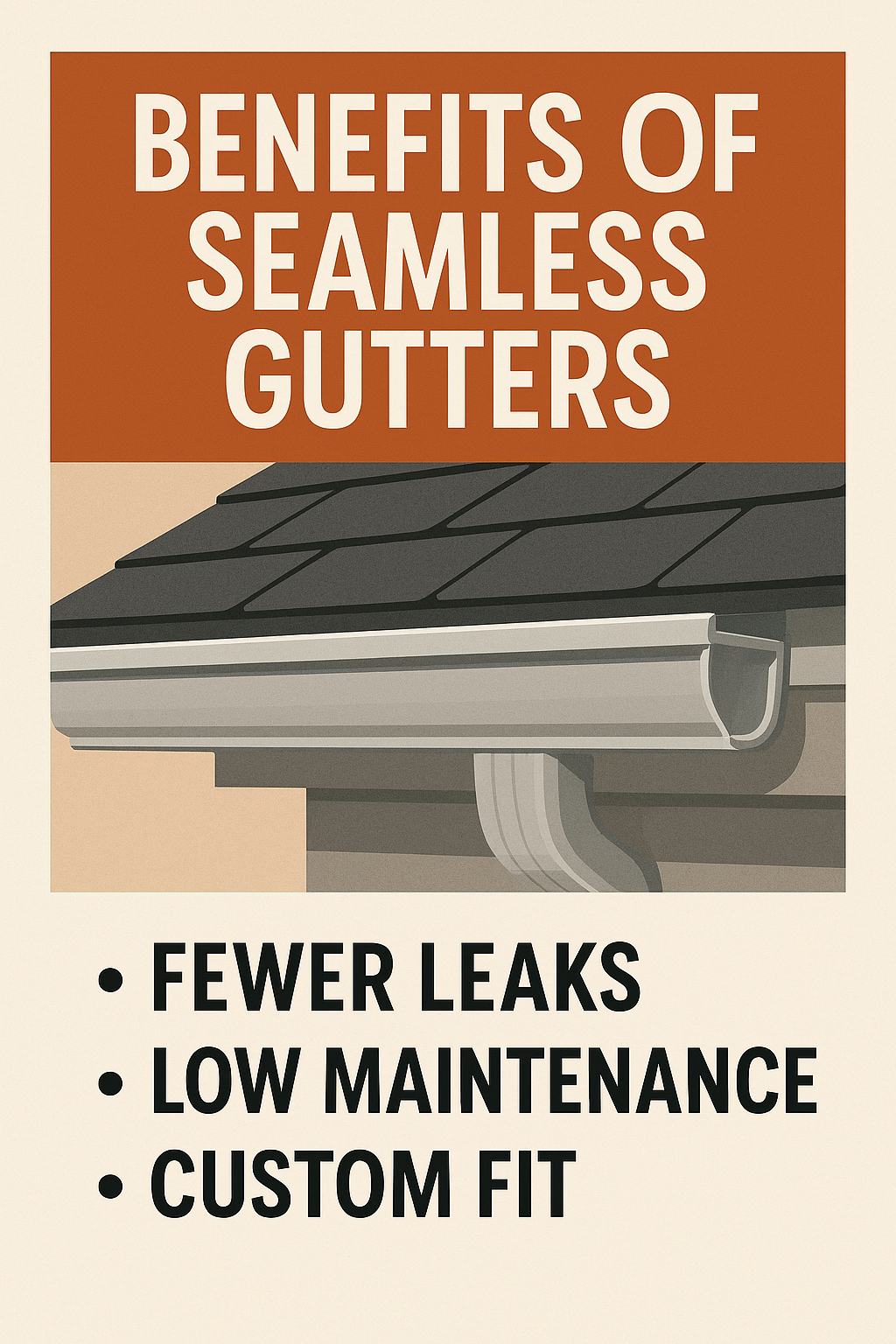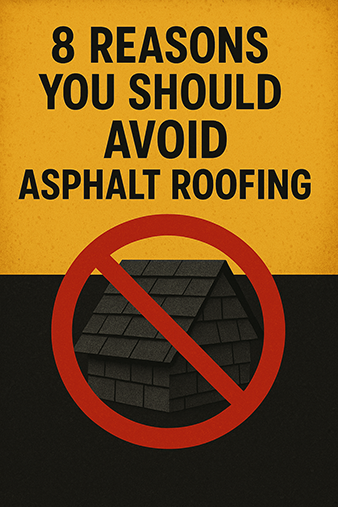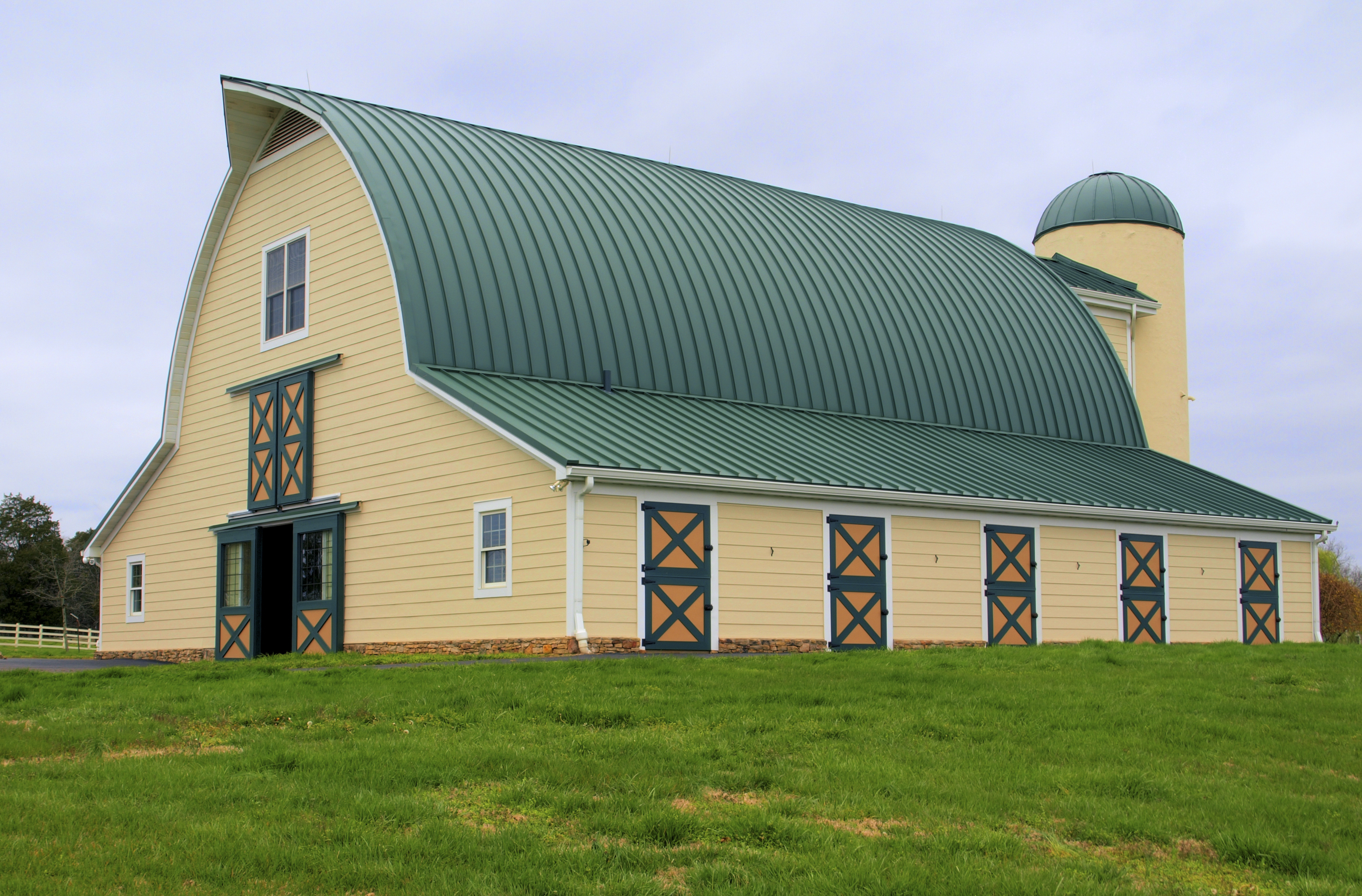Avoid These Mistakes When Installing Gutters - Size, Seams & More
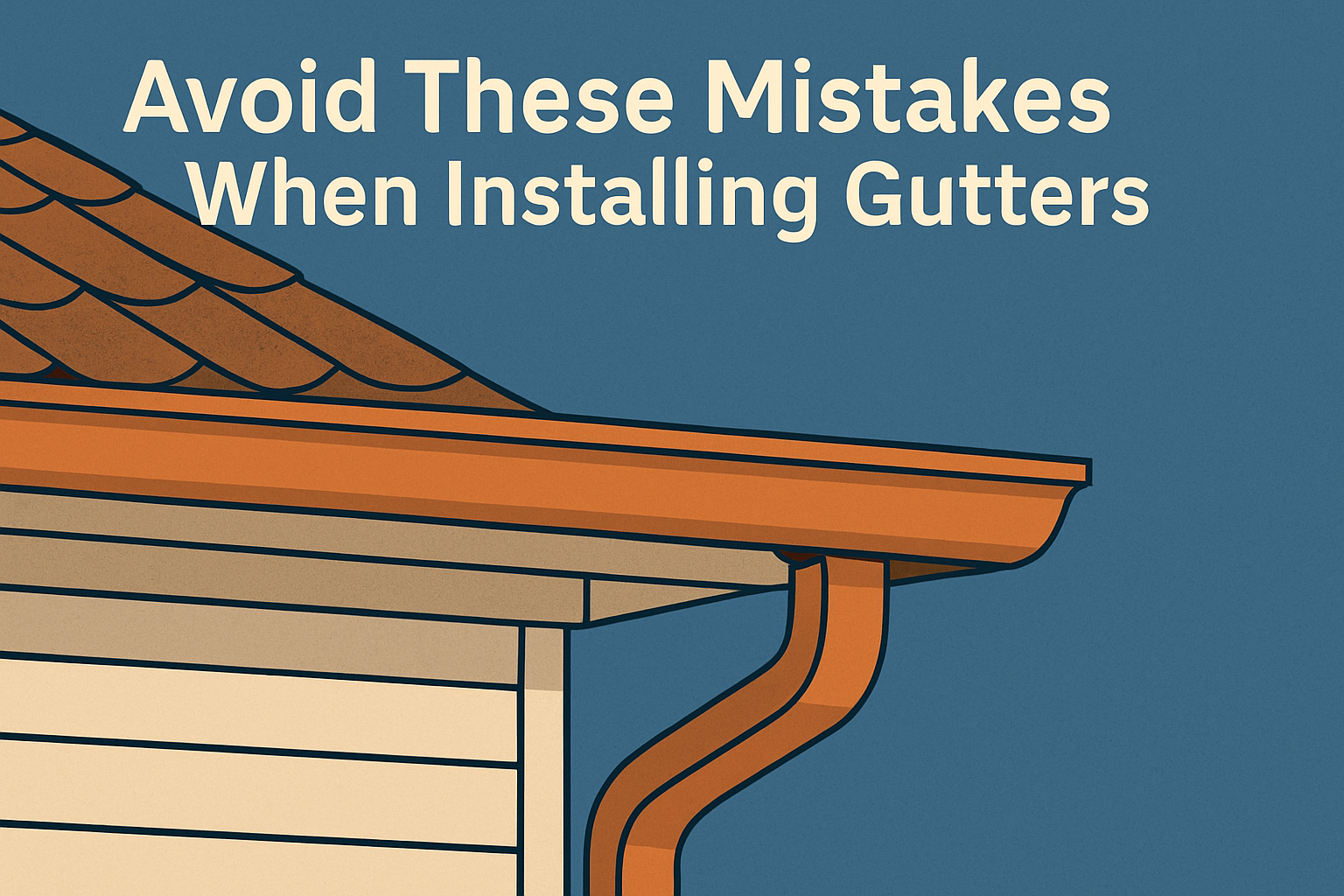
What are the common gutter installation mistakes?
Incorrect gutter size
Selecting the wrong size for gutter installations is a common but impactful error. If the gutters are too small, they won’t adequately handle the volume of water from heavy rains, leading to overflows that can damage a building's foundation and landscaping. Conversely, oversized gutters can be unnecessarily costly and may also cause issues with proper drainage and aesthetic integration with the home’s exterior.
It is essential to accurately calculate the roof’s square footage and the average rainfall for the area to determine the appropriate gutter size. This ensures the gutter system can handle the volume of water without overflowing, thus protecting the property effectively.
You can avoid this mistake by using detailed planning and consultation resources, such as local building codes that often provide guidelines on appropriate gutter sizing relative to roof size and local rainfall patterns. Ensuring measurements are precise and double-checked before installation can prevent issues related to incorrect gutter sizing.
Improperly pitched gutters
Improperly pitched gutters present a subtle yet serious issue that can lead to significant water-related damage to a property's structure and foundation. Proper pitch is essential for gutters, as it ensures that water flows towards the downspouts without pooling. When gutters are not sloped correctly, standing water can cause gutters to sag, and during colder months, it can freeze and lead to ice damming, which further damages the gutter system and the roof.
It involves adjusting the pitch of the gutters, ensuring there is at least a quarter inch of slope for every 10 feet of gutter. This adjustment allows for smooth water flow towards the downspouts, eliminating standing water and the associated risks.
You can avoid this installation mistake by using precise leveling tools during the initial installation of the gutters. Taking the time to measure and set the pitch correctly before securing the gutters firmly in place can prevent future complications, saving time and expense from unnecessary repairs.
Improper hanger spacing
Improper hanger spacing is a common installation mistake that compromises the structural integrity of gutter systems. When hangers are spaced too far apart, the gutters lack sufficient support, leading to sagging and potential detachment from the building. This spacing error can result in water pooling in certain areas of the gutters, increasing the risk of overflow and water damage to the property.
It is necessary to reposition existing hangers or add new ones to ensure they are spaced appropriately—typically no more than 18 to 24 inches apart. This adjustment provides the gutters with the necessary support to prevent sagging and maintain proper alignment, ensuring efficient water flow and drainage.
Too many seams
Too many seams in gutter installations often lead to problems such as leaks and blockages. Seams are the points where sections of gutters connect, and each seam represents a potential failure point that can compromise the gutter’s effectiveness. Leaks at these joints can cause water to drip or pour down inappropriately, potentially damaging the building’s foundation, siding, and landscaping.
It is advisable to reduce the number of seams by using longer sections of guttering or switching to seamless gutters. Seamless gutters are custom-fitted to the house and have joints only at the corners and downspouts, significantly decreasing the likelihood of leaks.
Choosing the wrong type of gutter
Choosing the wrong type of gutter for a building can lead to inefficiencies and damage over time. Different types of gutters, such as aluminum, steel, vinyl, or copper, each have their unique benefits and drawbacks and are suited to different environmental conditions and aesthetic preferences. For example, aluminum gutters are lightweight and resistant to corrosion, making them ideal for most climates, whereas copper gutters are more durable and enhance the aesthetic of historic or high-end homes but are significantly more expensive.
It is crucial to consider both the climate of the area and the architectural style of the building. You should consult with professionals to assess which material is most appropriate for their specific situation. For example, in areas with heavy snowfall, sturdy materials like steel are recommended to withstand the weight of the snow.
A practical tip for ensuring the longevity of any chosen gutter type is to perform regular maintenance, such as cleaning the gutters at least twice a year and after major storms. This prevents blockages and reduces wear and tear, regardless of the material type, thereby extending the lifespan of the gutters and maintaining their functionality and appearance.
Improper pitch
Improper pitch in gutter installations is a frequent issue that prevents water from flowing effectively towards the downspouts, leading to stagnation and overflow. The pitch— the slight angle at which gutters are installed to facilitate water movement—is crucial for their functionality. If the pitch is too shallow, water moves too slowly, allowing debris to settle and potentially clogging the system. Conversely, if the pitch is too steep, water may rush through too quickly, bypassing the downspouts during heavy rainfall and leading to overflow.
The gutters need to be adjusted so they slope appropriately towards the downspouts, typically at about a quarter inch of decline for every ten feet of gutter. This adjustment ensures that water is channeled efficiently and quickly enough to handle both regular and heavy rainfall without overshooting the downspouts. Professional installation is recommended to ensure that the pitch is precise, as even small errors can significantly impact the effectiveness of the water drainage system.
Wrong gutter placement
Wrong gutter placement can significantly undermine the effectiveness of a drainage system. Properly positioned gutters collect and channel water away from the structure's foundation to prevent soil erosion and water damage to the building's exterior and foundation. Gutters incorrectly placed too far from the roof edges fail to catch all the runoff water, whereas gutters installed too close to the roof can cause water to overshoot them during heavy rains.
To correct the mistake of wrong gutter placement, it is essential to adjust the gutters so they are positioned directly under the edge of the roof. This entails ensuring that the gutters are hung so that the inner edge aligns with the roof's drip edge, maximizing water capture without the risk of overshooting. It is also crucial that the gutters are not installed too tightly against the roof as this can lead to water backing up under the roof shingles, causing additional issues.
Bad downspout placement
Bad downspout placement can lead to several issues, including water damage to the foundation and inefficient water drainage from the roof. Ideally, downspouts should be strategically placed to direct water away from the building's foundation and toward a suitable drainage area. When downspouts are too close to the foundation or improperly directed, it can result in water pooling around the base of the house, which increases the risk of moisture penetrating the basement or weakening the foundation over time.
To correct the issue of bad downspout placement, repositioning the downspouts is necessary. They should extend at least five to ten feet away from the house or be connected to a drainage system that carries the water further away. Additionally, the downspouts should be positioned at the corners of the house or at the lowest points of the gutter system to maximize efficiency in water evacuation.
Ensuring that the downspouts are not obstructed or bent is crucial as this can restrict the flow of water, leading to overflow and potential damage to the gutter system and the home’s exterior.
Sagging gutters
Sagging gutters are a common problem that can compromise the structural integrity and effectiveness of a building's drainage system. This issue typically occurs when gutters are not properly supported or when they become weighed down by debris, water, or ice. Sagging prevents gutters from sloping correctly towards the downspouts, leading to poor water drainage and potential overflow back onto the roof or down the sides of the building.
To correct sagging gutters, it's essential to first clear them of any debris that might be causing excess weight. After cleaning, check the gutter hangers or brackets for any damage or wear. If the hangers are spaced too far apart, additional supports may need to be installed to provide adequate support and maintain the proper angle of the gutters.
In some cases, the existing hangers may need tightening or replacing if they are damaged or have become loose. Ensuring that the gutters are firmly attached and adequately supported along their length will prevent sagging and help maintain optimal functionality of the gutter system.
Gutters too far apart
When gutters are installed too far apart, it creates gaps that allow rainwater to miss the gutter system entirely, leading to uncontrolled runoff. This unmanaged water flow can cause erosion around the foundation, damage landscaping, and allow water to seep into the basement or crawl spaces, potentially leading to structural issues over time.
To correct the issue of gutters being too far apart, the installation of additional gutter sections is required to bridge the gaps between the existing segments. These new sections should be measured and cut to fit precisely, ensuring a continuous pathway for water flow from the roof edge into the gutter system. It's crucial that these additions are seamlessly integrated with the existing gutter sections to prevent leaks at the joints.
In cases where gutters are extensively spaced apart, it might be necessary to reconsider the entire layout of the gutter system, potentially repositioning some sections to create a more efficient and effective configuration. This will help ensure that all areas of the roof are adequately covered, and water is directed away from the building as intended.
Improper gutter installation
Improper gutter installation encompasses a variety of issues, from incorrect spacing and alignment to the use of inadequate materials and poor securing of the gutters to the building's fascia. These installation errors can lead to gutters that are inefficient, prone to damage, and likely to cause water-related issues around a property, such as erosion, foundation damage, and water infiltration into basements.
To correct improper gutter installation, a comprehensive evaluation is necessary to identify all the flaws in the current system. This may involve checking the level and pitch of the gutters to ensure they direct water towards downspouts effectively, verifying that all sections are securely fastened, and ensuring that materials suitable for the local climate and environmental conditions have been used. For instance, in areas prone to heavy snowfall, using sturdy materials and ensuring that gutters are securely attached can prevent sagging and detachment.
Improper gutter position
Improper gutter positioning can lead to several significant problems for a building's water management system, such as ineffective water capture, increased risk of water damage to the structure's facade, and potential foundation issues caused by improper water drainage. When gutters are not positioned closely enough to the roof's edge, they fail to catch all the runoff water; conversely, if they are placed too far beneath the roofline, water may overshoot them entirely during heavy rainfall.
The gutters need to be realigned so that they are optimally placed just beneath the edge of the roof to capture the maximum amount of runoff. This typically involves adjusting the gutter brackets or hangers, which secure the gutter to the fascia and control its horizontal positioning. The gutters should be installed so that their top edge is directly below the roof edge, but not so high that they interfere with the roof shingles.
The gutter is positioned incorrectly
When a gutter is positioned incorrectly, it often leads to poor water management around a property, including issues such as overflow during heavy rain, water damage to the siding, and excessive water near the foundation which can lead to structural problems over time. Gutters should be installed so that they effectively capture roof runoff and direct it away from the house through the downspouts. Incorrect positioning might mean the gutters are too high, missing the runoff from the roof's edge, or too low, causing water to spill over before reaching the downspout.
It's necessary to adjust the gutter to the correct height and angle. This typically involves re-securing the gutter brackets to the fascia at the proper height. The gutters should ideally be installed with a slight pitch, approximately 1/4 inch for every 10 feet, heading towards a downspout. This slope ensures that water flows naturally toward the downspout without stagnating or spilling over.
Gutter Seams Separating
Separating gutter seams often result from subpar installation, thermal expansion and contraction of materials, or natural wear. To fix this, it's necessary to reseal the seams. Start by cleaning the seam areas thoroughly to ensure that the sealant adheres properly. Apply a silicone-based or specialized gutter sealant over and inside the seams. Ensure the sealant is pressed fully into the seams for a watertight seal. It’s beneficial to perform this repair during dry weather to allow the sealant to cure properly.
Damage During Installation
Damage to gutters during installation can occur due to improper handling, use of incorrect tools, or excessive force. This might include dents, punctures, or misaligned sections which can affect water flow and lead to leaks. To repair this type of damage, small dents and bends can often be gently hammered out using a rubber mallet. Punctures or severely damaged sections may need to be replaced entirely. It’s important to handle gutter materials carefully and use appropriate tools to prevent further damage.
Damaging the Gutters
Continual damage to gutters can be caused by several factors, including ladder placement, debris accumulation, and ice formation. To mitigate this, ensure that ladders are equipped with stabilizers that distribute weight evenly and prevent direct contact with the gutters during maintenance.
Regular cleaning of debris from the gutters will prevent undue stress and potential sagging or breakage. Installing gutter guards can also reduce the amount of debris entering the system. For areas prone to freezing, heating elements can be installed to prevent ice from forming and causing physical stress to the gutters.
How do you tell if gutters are installed correctly?
To determine if gutters are installed correctly, it's essential to review several key aspects of their setup and function. This evaluation ensures that the gutters efficiently manage water runoff from your roof, thereby protecting your home's structure and foundation. Here’s a detailed checklist to guide you, especially useful if you’re looking at a gutter installation guide or preparing for gutter repairs:
- Proper Slope/Pitch: Gutters must have a slight slope towards the downspouts, typically 1/4 inch drop for every 10 feet of length. This ensures that water flows towards the downspouts without pooling.
- Secure Fastening: Examine the fasteners and hangers. Gutters should be securely attached to the fascia board with no sagging. They must be firm along their entire length with no gaps between the gutter and the fascia.
- Correct Gutter Placement: Gutters should be positioned directly beneath the edge of the roof to capture all runoff effectively. There should not be any spillover during rainfall, which can be a common oversight if not installed carefully.
- Seam and Joint Integrity: For non-seamless gutters, check the seams and joints for tightness and any signs of leakage. In cases where you notice separation or leaks, gutter repairs might be necessary to reseal these areas to prevent water damage.
- Downspout Configuration: Downspouts should be strategically located to direct water away from the foundation. Ensure they are clear of obstructions and extend well away from the house—ideally, at least 5 feet.
- Inspection for Leakage: Look for any signs of water stains or damage underneath the gutters and along the siding and foundation of your house. This could indicate that the gutters are not handling runoff properly.
- Overall Gutter Condition: Check for rust, cracks, and holes. Such damage might require gutter repairs to ensure longevity and functionality.
- Performance During Rain: Observing how your gutters perform in rain is the most direct way to assess their effectiveness. Gutters should not overflow, and all joints should remain leak-free under normal rainfall conditions.
- Adequate Gutter Capacity: Make sure the gutter size is appropriate for the surface area of your roof. A gutter installation guide can provide specifics on sizing based on your geographic location and the average rainfall your area receives.
- Check for Gutter Guards: If gutter guards are installed, ensure they are fitting correctly and not obstructing water flow into the gutters.
How to Prevent Future Gutter Problems
Here’s the list presented as numbered bullet points for clarity and easy reference:
- Clean gutters regularly – Remove leaves, twigs, dirt, and debris at least twice a year to prevent clogs and overflow.
- Install gutter guards – Use mesh screens or covers to keep debris out while still allowing water to flow through.
- Trim nearby trees – Cut back overhanging branches to reduce the amount of leaves and debris falling into the gutter system.
- Replace damaged gutters – Swap out any cracked, bent, or broken sections to maintain effective water drainage.
- Clean off the roof – Prevent debris from washing into the gutters by clearing the roof surface regularly, especially after storms.
- Protect downspouts – Ensure downspouts are clear of blockages and extended far enough from the house to direct water away from the foundation.
- Realign the gutter if needed – Adjust sagging or misaligned sections to maintain a proper slope toward downspouts.
- Perform regular cleaning – Establish a seasonal cleaning schedule to avoid buildup and water stagnation.
- Conduct regular inspections – Look for early signs of rust, leaks, loose hangers, or sagging areas after storms or heavy rain.
- Check for rusty gutter spots – Treat small rust patches early to prevent holes and long-term corrosion.
- Ensure free water flow through downspouts – Test with a hose or during rain to confirm water exits properly and doesn't back up.
- Ensure proper slope – Maintain a slight downward angle (about 1/4 inch per 10 feet) toward the downspouts to help water flow efficiently.
The Cost of Incorrect Gutter Installation
Incorrect gutter installation can lead to costly repairs. Water may overflow or pool, causing damage to the foundation, roof, fascia, and even the interior of your home. Fixing these problems can range from a few hundred dollars for minor gutter repairs to several thousand for foundation or water damage restoration. The cost of correcting a poor installation far exceeds what it would have cost to install the gutters properly from the start.
Benefits of Professional Gutter Installation
- Prevents Water Damage – Redirects rainwater away from your home’s structure.
- Protects Your Roof – Reduces leaks, rot, and ice dam formation.
- Safeguards the Foundation – Prevents cracks and shifting caused by water pooling.
- Reduces Mold & Mildew – Minimizes moisture buildup around walls and basements.
- Boosts Curb Appeal – Enhances aesthetics with seamless, well-fitted gutters.
- Lowers Maintenance Needs – Proper installation prevents clogs and sagging.
- Prevents Landscape Erosion – Controls water flow to protect plants and soil.
- Saves Money Long-Term – Avoids costly repairs to roofs, siding, and foundations.
- Customized Solutions – Experts recommend the best materials and gutter types.
- Comes with Warranty – Professional installers often provide workmanship guarantees.

